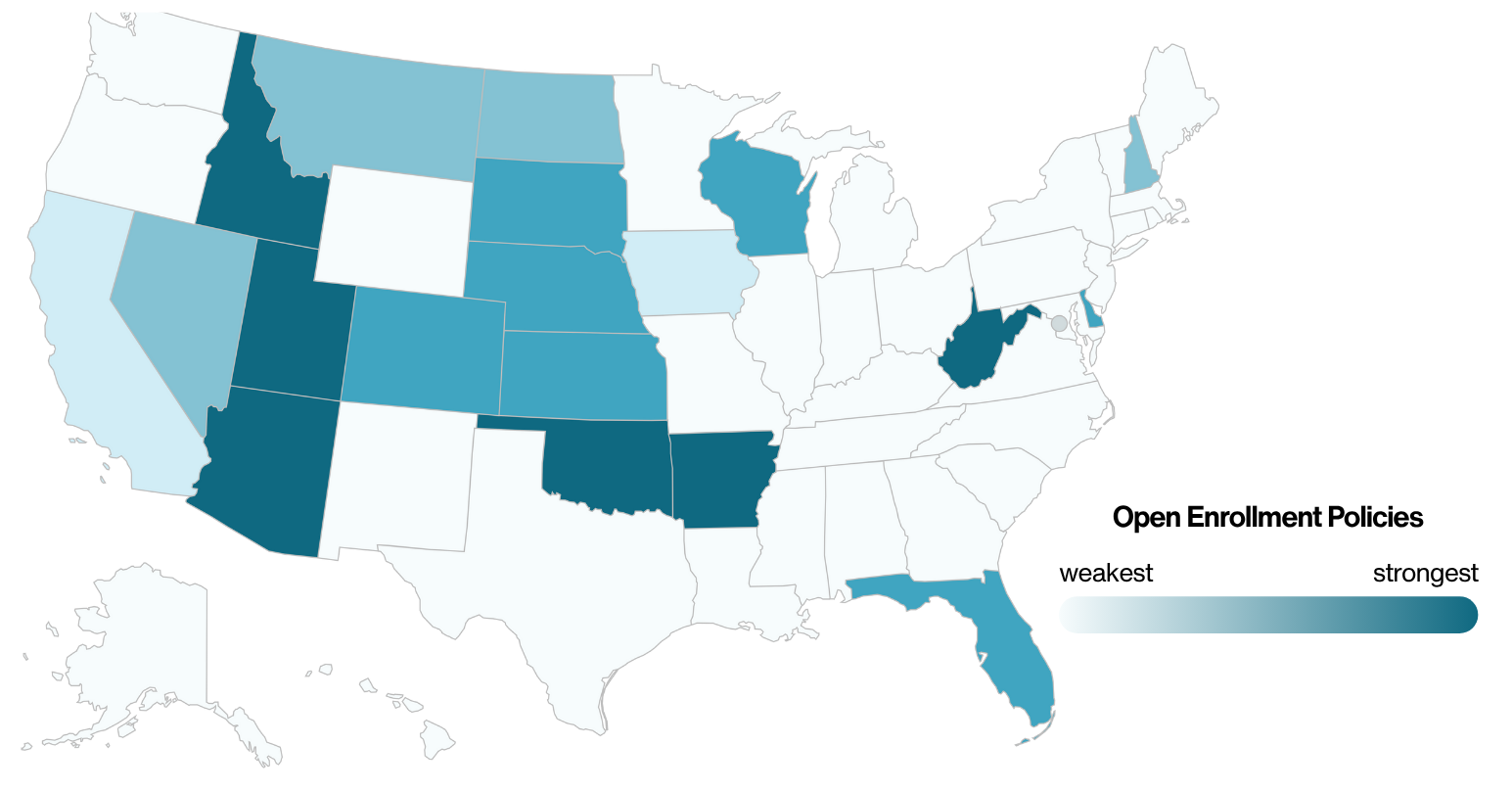by Erica Jedynak, chief operating officer, yes. every kid.
Every child deserves the right to attend a school that best fits their needs—without invisible lines holding them back. That vision is at the heart of the No More Lines Coalition and the growing movement of policymakers rethinking how public education works in America.
Polling is clear: nearly 80% of parents support open enrollment where students are empowered to apply to any public school in their state.
Families are united in wanting public education to mean what it says: all public schools are open to all students. Yet, for millions of families, outdated laws and opaque district practices still block their path.
The latest edition of Public Schools Without Boundaries from Reason Foundation looks into how each state’s policy on public school enrollment can best empower students and families.
The States Leading the Way
Some states are showing that they take seriously the mission of achieving public schools without boundaries.
Reason Foundation’s rubric most heavily weighs whether a state has open cross-district enrollment, then within-district enrollment, then other aspects of a strong policy like an appeals process, school capacity reporting, and data transparency.
- Oklahoma held the top spot nationwide, after establishing a strong policy in 2024 which empowers families to enroll across district lines with clear reporting and accountability.
- Arkansas surged to second place after Governor Sarah Huckabee Sanders signed reforms requiring districts to publish transfer policies and provide families with reasons for denials in writing, the biggest improvement of any state in 2025.
- Idaho, Arizona, Utah, and West Virginia round out the leaders, each earning “A” grades for policies that empower parents, protect student rights, and require meaningful transparency.

Biggest Leaps in Public School Access
Flying under the radar in the rankings, lawmakers in Nevada and New Hampshire showed their commitment to equalizing public school access this year, making the most progress of any state after Arkansas.
Nevadans of all stripes believe every kid should have access to the public school that best meets their needs. So, this year, policymakers in Carson City including Democratic House leadership and Republican Gov. Joe Lombardo saw through their differences and enacted policy to expand access for hundreds of thousands of students—empowering kids to apply to any public school in their district. Approximately 70% of Nevadans live in the Clark County School District, the fifth largest in the US, enrolling more than 300,000 students and operating 378 schools. Now, every student can access any school in their district, not just where they are assigned by address.
New Hampshire lawmakers also made great strides to shift more power to families this year, empowering students to access more public school options within their resident school district.
Barriers That Still Hold Families Back
The reality is that 80% of students still live in states with weak or ineffective open enrollment laws. The biggest barriers are not philosophical, they’re practical and solvable.
- Transparency: Most states don’t track or publish how many transfer applications are accepted, denied, or why. Families and taxpayers are left in the dark.
- Capacity: Districts often claim they’re “full” even as enrollment declines, shutting families out without accountability.
- Appeals: In most states, if a district denies your child’s transfer, you’re stuck. There’s no neutral appeals process.
- Discrimination: In some states, students with disabilities or those not seen as “high-achieving” can be turned away—despite being guaranteed equal access under law.
One analysis from Wisconsin found that school districts deny enrollment to students with disabilities at higher rates than their classmates. Public education should not exclude students based on their address or abilities.
A Roadmap for Reformers
The path forward is clear. Every policymaker can help tear down these barriers by focusing on Reason’s seven best practices for open enrollment:
- Statewide open enrollment both across and within districts.
- Free access—no transfer tuition.
- Open to all students, regardless of ability or disability.
- Transparent reporting by state agencies and districts, including rejections and reasons why.
- Posting available capacity online, by grade and school.
- Written reasons for denials, with families notified clearly.
- Independent appeals process to hold districts accountable.
The Destination: Public Education Without Boundaries
The future of public education will not divide families by ZIP code or limit opportunity to neighborhood lines drawn generations ago. It will empower every child to attend any public school, and every family with the information and freedom to make the best choice for their kids’ individual needs.
The No More Lines Coalition, made up of a diverse group of education advocates including leading research organizations like Reason Foundation, is leading the charge to make that vision a reality. Policymakers across the country can make history by tearing down outdated barriers and putting families first.
